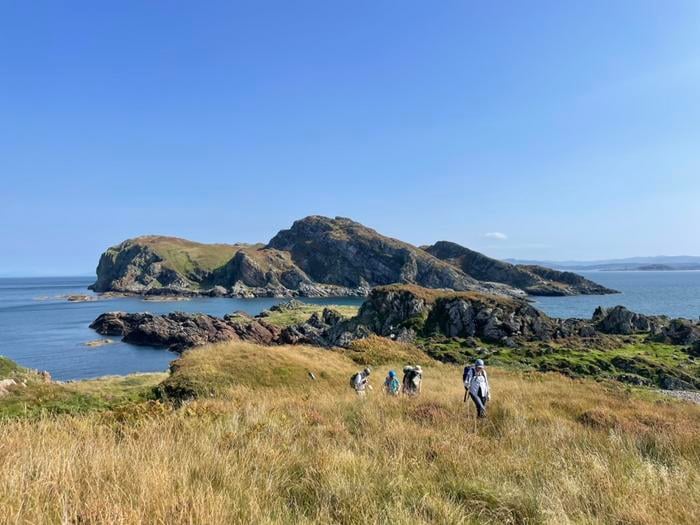A massive rock formation stretching across Ireland and Scotland may hold the key to understanding a pivotal moment in Earth’s history. New research suggests these ancient stones offer an unparalleled glimpse into the “snowball Earth” period, a time when our planet was encased in ice from pole to pole.
Scientists from University College London (UCL) have dated this rock formation, known as the Port Askaig Formation, to between 662 and 720 million years ago. This timeframe aligns with the Sturtian glaciation, the first of two global freezes that scientists believe kickstarted the evolution of complex life on Earth.
A Unique Window into Earth’s Past
What makes this discovery truly remarkable is a specific outcrop found on the Garvellach Islands off the coast of Scotland. Here, researchers have uncovered a rare geological treasure: rocks that show the gradual transition from a warm, tropical environment into the icy grip of snowball Earth.
Elias Rugen, lead author of the study and PhD candidate at UCL Earth Sciences, explains the significance: “The layers of rock exposed on the Garvellachs are globally unique. Underneath the rocks laid down during the unimaginable cold of the Sturtian glaciation are 70 metres of older carbonate rocks formed in tropical waters. These layers record a tropical marine environment with flourishing cyanobacterial life that gradually became cooler, marking the end of a billion years or so of a temperate climate on Earth.”
This preserved transition is exceptionally rare. In most parts of the world, ancient glaciers scraped away the underlying rocks, erasing this crucial piece of Earth’s climatic history. The Scottish outcrop offers scientists an unprecedented look at how our planet shifted from a warm, stable climate into a deep freeze.
From Ice Age to Evolution’s Big Bang
The Sturtian glaciation lasted for an astounding 60 million years. Prior to this deep freeze, life on Earth consisted solely of single-celled organisms and algae. However, in the aftermath of this icy period, something extraordinary happened: complex, multicellular life emerged and diversified at a rapid pace.
Professor Graham Shields, senior author of the study, highlights the connection: “These rocks record a time when Earth was covered in ice. All complex, multicellular life, such as animals, arose out of this deep freeze, with the first evidence in the fossil record appearing shortly after the planet thawed.”
One intriguing theory suggests that the harsh conditions of snowball Earth may have actually promoted the evolution of more complex life forms. The extreme cold could have pushed single-celled organisms to cooperate, eventually leading to the development of multicellular creatures.
The transition out of this icy period was likely dramatic and rapid. As the ice retreated, life forms that had adapted to millions of years of freezing conditions suddenly found themselves in a dramatically different world. This environmental pressure may have triggered an evolutionary arms race, with only the most adaptable organisms surviving to become the ancestors of all animals we see today.
Why it matters: Understanding Earth’s ancient climate shifts provides crucial context for our planet’s current climate challenges. The snowball Earth period represents one of the most extreme climate events in our planet’s history, and studying its effects on early life can offer insights into how modern ecosystems might respond to rapid environmental changes.
The research team used cutting-edge dating techniques to determine the age of these ancient rocks. By analyzing tiny, durable minerals called zircons, which contain radioactive uranium that decays into lead at a predictable rate, the scientists were able to pinpoint when these rocks were formed.
This precise dating not only confirms the global significance of these rock formations but also strengthens the case for designating the site as an official marker for the beginning of the Cryogenian Period. Such a designation, known as a Global Boundary Stratotype Section and Point (GSSP), would elevate the scientific importance of the area and potentially attract researchers and geology enthusiasts from around the world.
As our understanding of Earth’s ancient past continues to evolve, these Scottish and Irish rocks stand as silent witnesses to a time when our planet was locked in ice. Their story reminds us of the incredible resilience of life and the profound impact that global climate shifts can have on the course of evolution.


